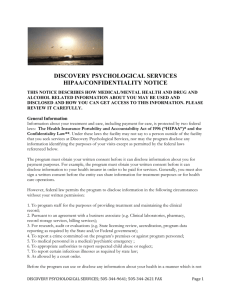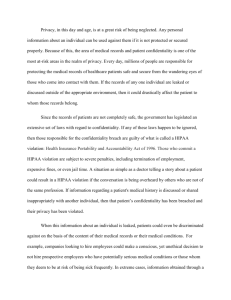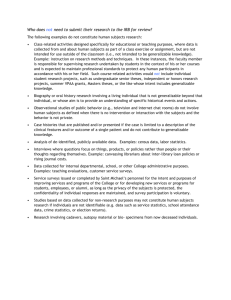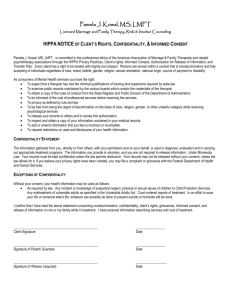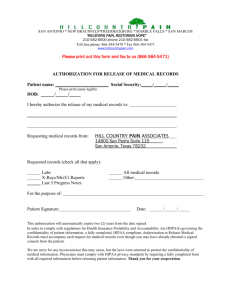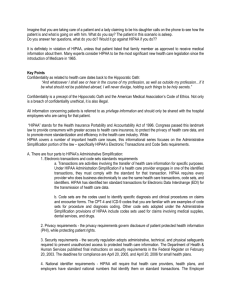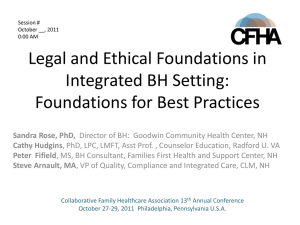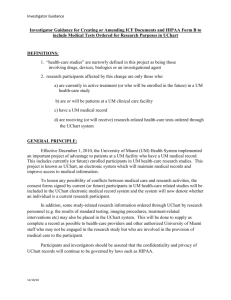Case reports policy
advertisement
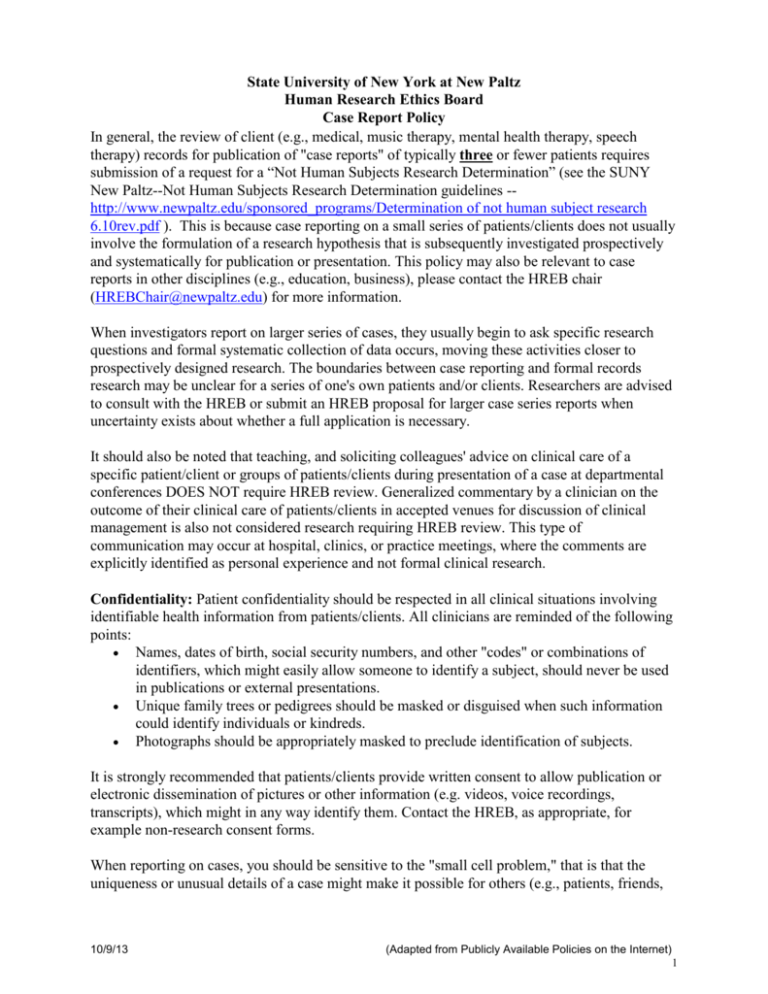
State University of New York at New Paltz Human Research Ethics Board Case Report Policy In general, the review of client (e.g., medical, music therapy, mental health therapy, speech therapy) records for publication of "case reports" of typically three or fewer patients requires submission of a request for a “Not Human Subjects Research Determination” (see the SUNY New Paltz--Not Human Subjects Research Determination guidelines -http://www.newpaltz.edu/sponsored_programs/Determination of not human subject research 6.10rev.pdf ). This is because case reporting on a small series of patients/clients does not usually involve the formulation of a research hypothesis that is subsequently investigated prospectively and systematically for publication or presentation. This policy may also be relevant to case reports in other disciplines (e.g., education, business), please contact the HREB chair (HREBChair@newpaltz.edu) for more information. When investigators report on larger series of cases, they usually begin to ask specific research questions and formal systematic collection of data occurs, moving these activities closer to prospectively designed research. The boundaries between case reporting and formal records research may be unclear for a series of one's own patients and/or clients. Researchers are advised to consult with the HREB or submit an HREB proposal for larger case series reports when uncertainty exists about whether a full application is necessary. It should also be noted that teaching, and soliciting colleagues' advice on clinical care of a specific patient/client or groups of patients/clients during presentation of a case at departmental conferences DOES NOT require HREB review. Generalized commentary by a clinician on the outcome of their clinical care of patients/clients in accepted venues for discussion of clinical management is also not considered research requiring HREB review. This type of communication may occur at hospital, clinics, or practice meetings, where the comments are explicitly identified as personal experience and not formal clinical research. Confidentiality: Patient confidentiality should be respected in all clinical situations involving identifiable health information from patients/clients. All clinicians are reminded of the following points: Names, dates of birth, social security numbers, and other "codes" or combinations of identifiers, which might easily allow someone to identify a subject, should never be used in publications or external presentations. Unique family trees or pedigrees should be masked or disguised when such information could identify individuals or kindreds. Photographs should be appropriately masked to preclude identification of subjects. It is strongly recommended that patients/clients provide written consent to allow publication or electronic dissemination of pictures or other information (e.g. videos, voice recordings, transcripts), which might in any way identify them. Contact the HREB, as appropriate, for example non-research consent forms. When reporting on cases, you should be sensitive to the "small cell problem," that is that the uniqueness or unusual details of a case might make it possible for others (e.g., patients, friends, 10/9/13 (Adapted from Publicly Available Policies on the Internet) 1 and family members) to identify the individual based upon the information provided in the case description. 10/9/13 (Adapted from Publicly Available Policies on the Internet) 2 CASE REPORT (Not Human Subjects Research Determination Needed) RESEARCH (HREB approval needed) Record Review: Three or fewer patients Reviewing four or more patient/client records appears to meet the federal definition of research (systematic investigation intended to contribute to generalizable knowledge). See NOTE 1 below. Clinical treatment: Each patient/client is treated as clinically indicated - treatment is not directed by a research protocol nor are specific research interventions/interactions involved. If research protocol dictates how the patients/clients/subjects will be treated and/or specific research interventions/ interactions are scheduled. HIPAA No HIPAA review/approval required provided patient confidentiality is protected (see NOTE 2 below). Need either: (1) signed HREB approved Informed Consent forms from all participants that includes HIPAA Authorization OR (2) an HREB approved Waiver of (a) Informed Consent AND (b) HIPAA Authorization. Generalizable? NOT GENERALIZABLE or scientifically rigorous. Information is educational describing a very limited number of interesting cases (3 or less) and how they were treated. GENERALIZABLE. Hypotheses can be proved/disproved. Data is collected and analyzed in a rigorous manner (may include statistics). NOTE 1: Review of more than 3 patients/clients usually involves the clinician/therapist/investigator asking specific research questions which lead to formal systematic collection of data, moving these activities closer to prospectively designed research. The boundaries between case reporting and human subjects research may be unclear for a series of one's own patients/clients. Researchers are advised to consult with the HREB or submit larger case series reports for HREB review when uncertainty exists about whether formal and systematic collection of human subjects research is occurring. NOTE 2: HIPAA regulations permit case reports provided patient confidentiality is protected. This means that your case report cannot contain any information that would identify the patient, including but not necessarily limited to: Names, dates of birth, social security numbers, and other "codes" or combinations of identifiers, which might easily allow someone to identify a subject, should never be used in publications or external presentations. Unique family trees or pedigrees should be masked or disguised when such information could identify individuals or kindreds. Photographs should be appropriately masked to preclude identification of subjects or only be used if patients/clients provide written consent to allow publication or electronic dissemination of pictures or other information (e.g. videos, voice recordings, transcripts), which might in any way identify them. Clinicians/Therapists should be sensitive to the "small cell problem," that is that the uniqueness or unusual details of a case might make it possible for others (e.g., patients, friends, and family members) to identify the individual based upon the information provided in the case description. 10/9/13 (Adapted from Publicly Available Policies on the Internet) 3


